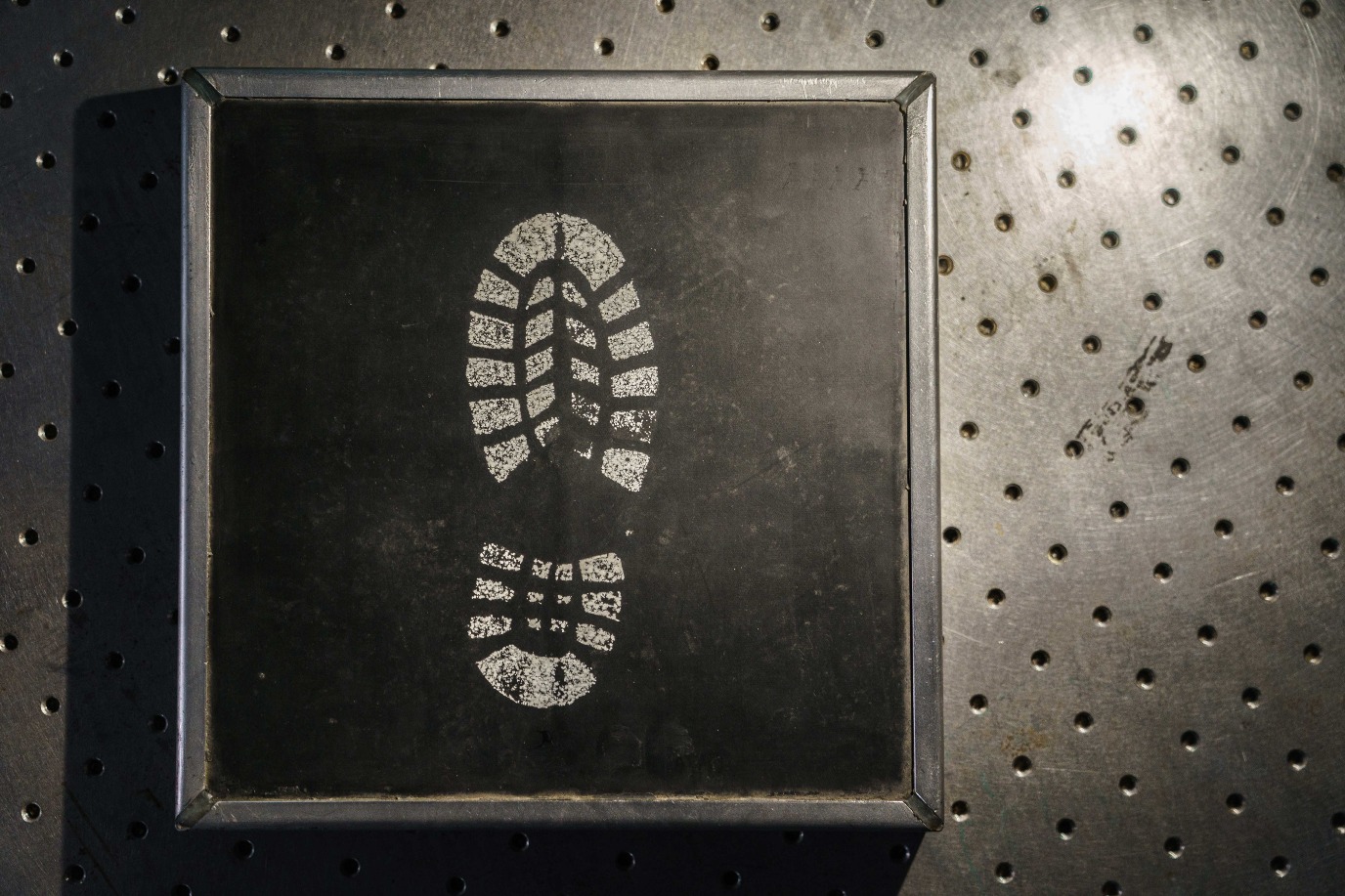Lopend energie oogsten
Een stoeptegel bij het station van Zuidhorn, op een veelbewandelde plek tussen trein- en busstation, telt de stappen van passanten die over de tegel lopen en oogst energie uit de bewegingen van die passanten. Momenteel is de stoeptegel even terug in het lab van ontwikkelaar professor Mónica Acuautla Meneses.



Zoals op de foto te zien, is de tegel aan de onderkant voorzien van een flink aantal piëzoelektrische korrels: een materiaal dat een stroompje afgeeft als gevolg van druk die erop uitgeoefend wordt – bijvoorbeeld wanneer er een reiziger op stapt. ‘De hoeveelheid elektriciteit die wandelende reizigers in Zuidhorn opwekken zal klein zijn, niet te vergelijken met wat een zonnepaneel kan leveren,’ vertelt Acuautla. Maar het is genoeg om bijvoorbeeld kleine elektronica - waaronder sensoren - lokaal van stroom te voorzien.
Nu is de tegel dus weer even terug in het lab voor een upgrade. ‘Er was wat lekkage rondom de kabels. Vooraf leek alles in het lab natuurlijk perfect te werken, we hadden de tegel zelfs onder water getest. Maar doordat mensen er overheen liepen in natte omstandigheden, ontstond er een soort pompend effect waardoor het water tóch bij de elektronica kon komen.’ Voor Acuautla zijn dit soort tests in de buitenwereld heel waardevol. ‘Anders kunnen we alleen controleerbare omstandigheden in het lab testen. Door in de buitenwereld te testen leer je veel meer.’
Acuautla wil graag soortgelijke tegels ontwikkelen voor een stoplicht, waarbij de bewegingen van het verkeer de lichten van stroom voorzien, of voor een kinderdagverblijf, waar kinderen door te springen gekleurde lampen kunnen bedienen. In haar onderzoek werkt ze aan de materialen die nodig zijn voor verschillende toepassingen, en het verfijnen daarvan. Ze licht toe: ‘Piëzo-materialen die nu commercieel beschikbaar zijn hebben vaak specifieke omstandigheden nodig, zoals bewegingen met een hogere frequentie. Wij zoeken dan naar materialen die het ook bij tragere beweging doen, dus bij een lagere frequentie. Want je kunt mensen nu eenmaal niet vragen om sneller over zo’n stoeptegel te lopen!’
Tekst: FSE Science Newsroom | Charlotte Vlek
Foto’s: Reyer Boxem
In Makers van de RUG belichten we elke twee weken een onderzoeker die iets concreets heeft ontwikkeld: van zelfgemaakte meetapparatuur voor wetenschappelijk onderzoek tot kleine of grote producten die ons dagelijks leven kunnen veranderen. Zo dragen RUG-onderzoekers bij aan oplossingen voor grote wetenschappelijke en maatschappelijke uitdagingen.
Techniekonderwijs en -onderzoek maken bij de RUG al decennia deel uit van een breed palet aan sterke disciplines en landelijk werken we steeds intensiever samen met de vier technische universiteiten.
Eerdere portretten van 'Makers' vind je op de overzichtspagina
Meer informatie
Mónica Acuautla Meneses
Meer nieuws
-
06 januari 2026
AI-phasie: kunstmatige intelligentie helpt bij taalgebrek
-
06 januari 2026
Beter zicht op de werkpaarden van ons lichaam
